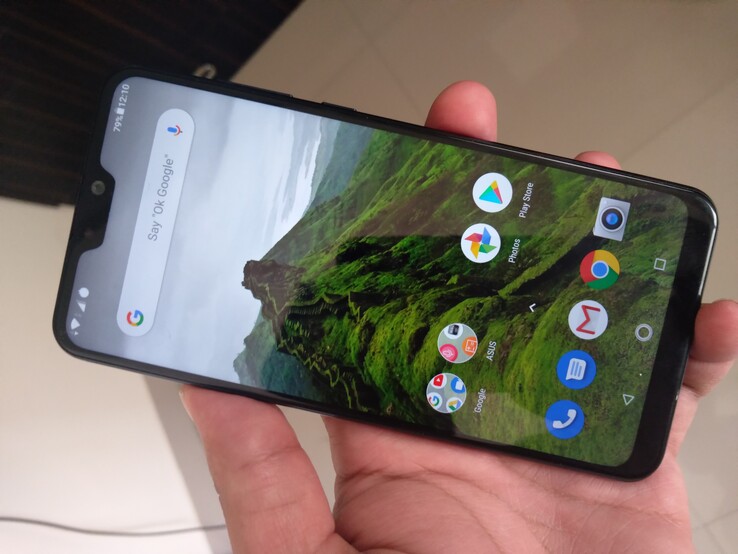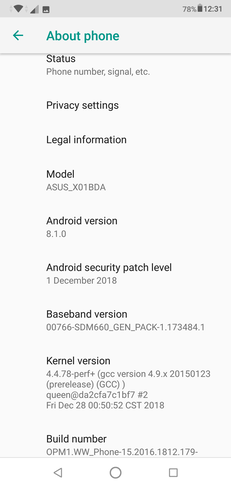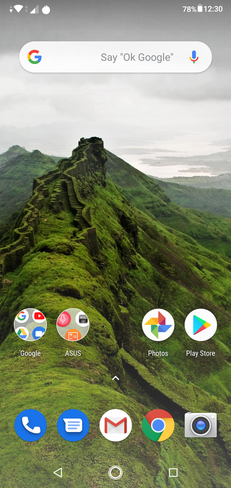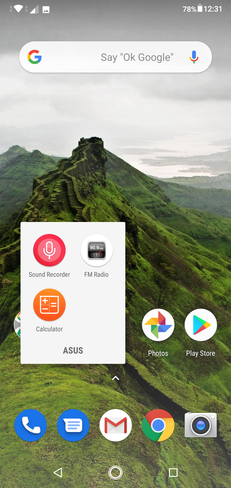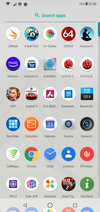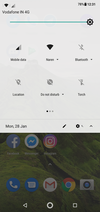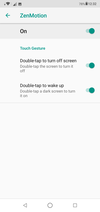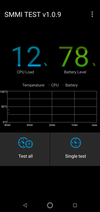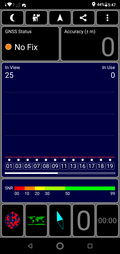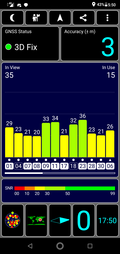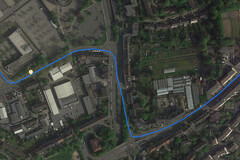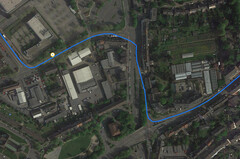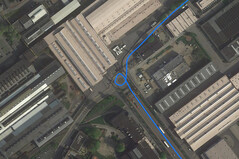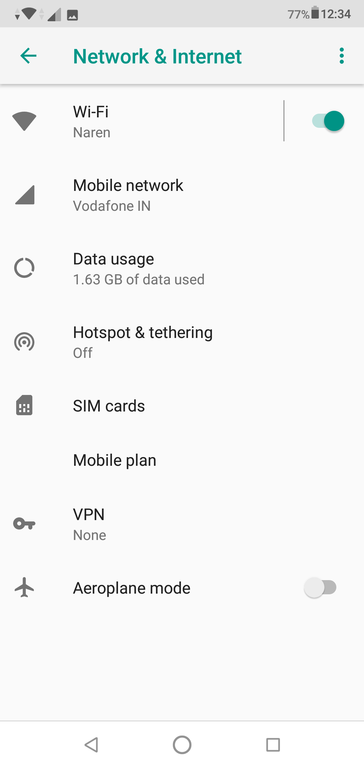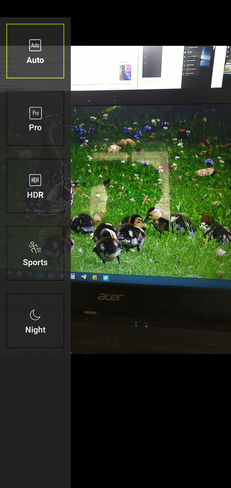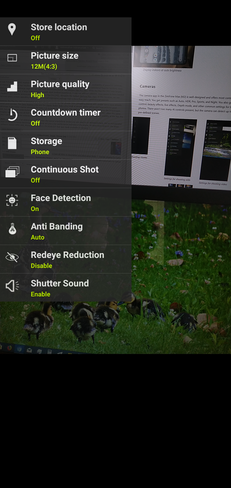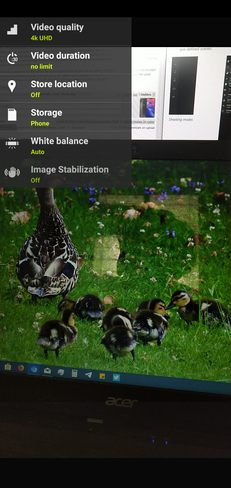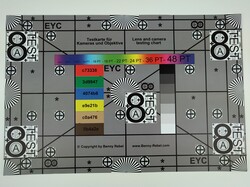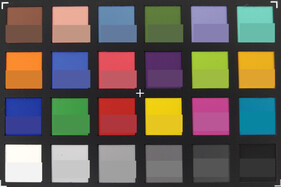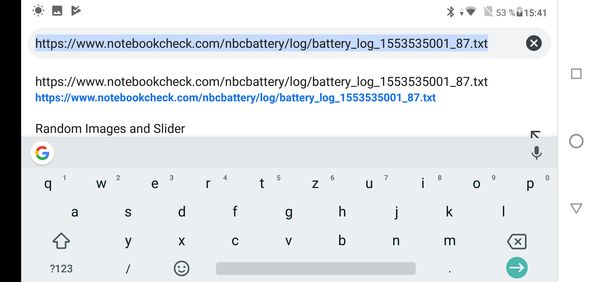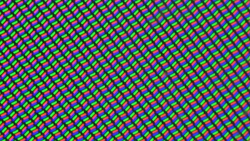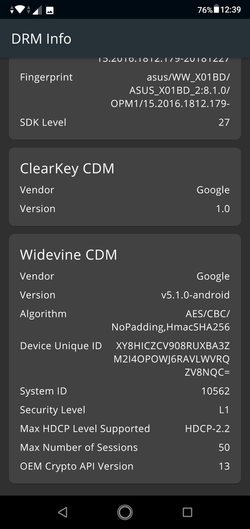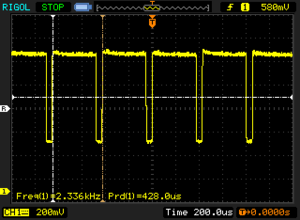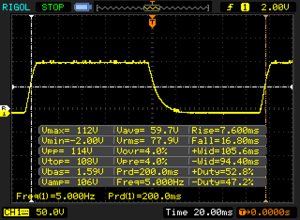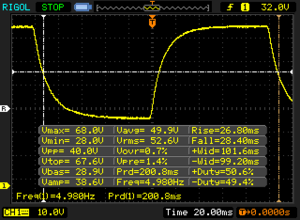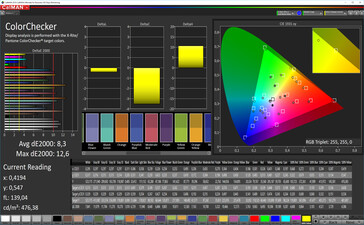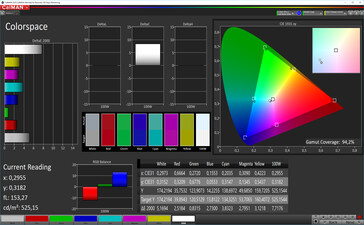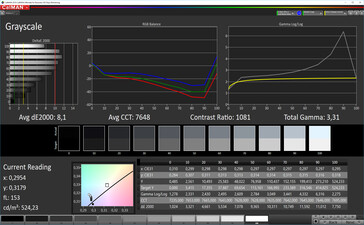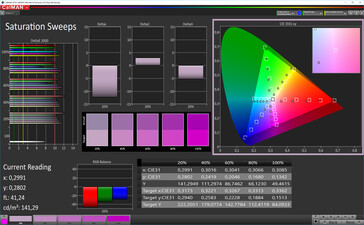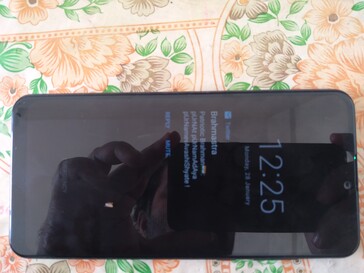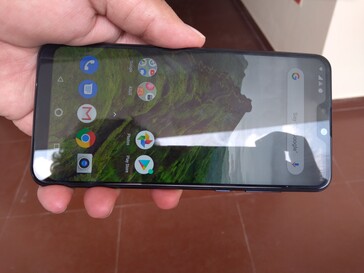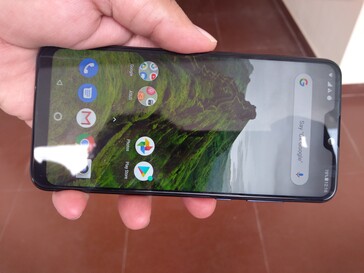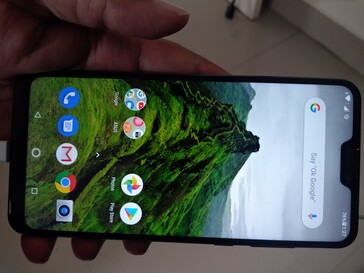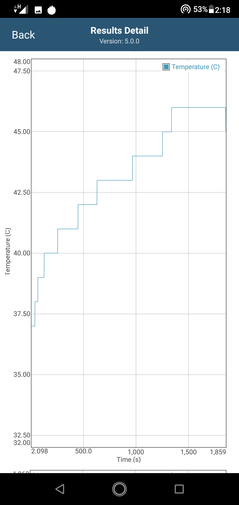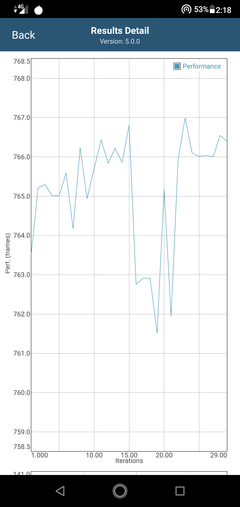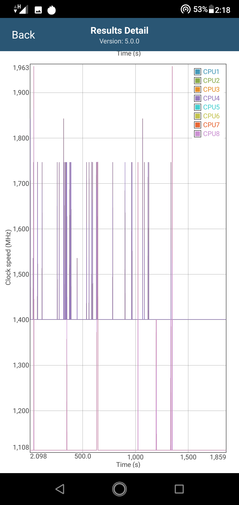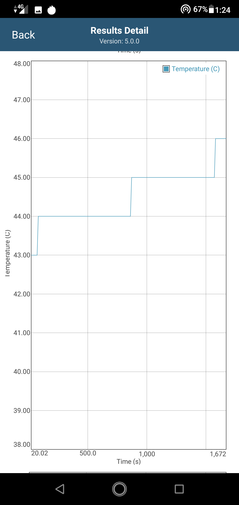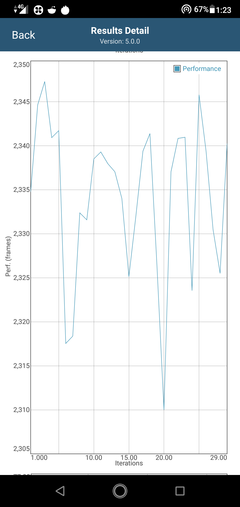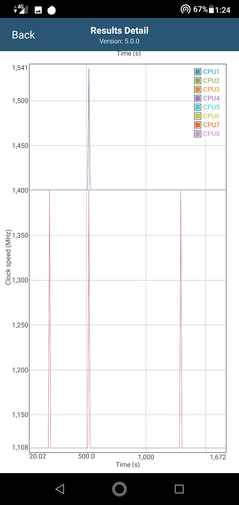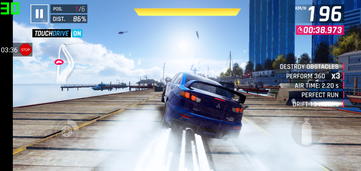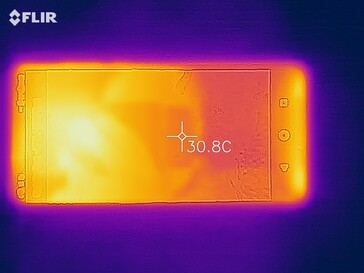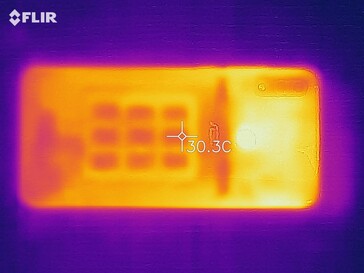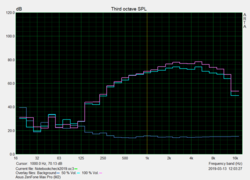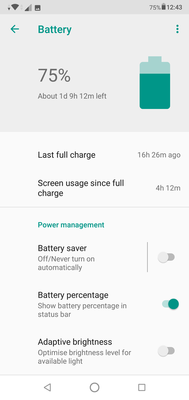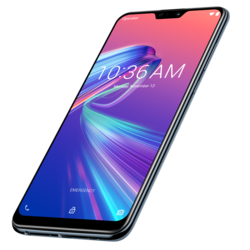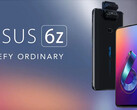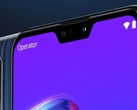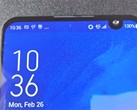Asus ZenFone Max Pro (M2) Smartphone Review

The sub-₹15,000 (US$200) market has always proven to be a lucrative one. Advancements in SoC tech, availability of powerful cameras, and intense competition has resulted in many OEMs offering features in this price range that were once considered flagship territory. Asus tasted success in the mid-range segment last year with the introduction of the ZenFone Max Pro (M1). While the Max Pro (M1) was mostly praised for its good specs, a large battery, and a smooth stock Android experience, it was not without criticism. Asus seems to have heeded to feedback and recently announced the successor, the Max Pro (M2), alongside the budget ZenFone Max (M2). In this iteration, we see improved specs, a more appealing design, and an overall impressive package that is more than just a generational upgrade.
However, the Max Pro (M2) is somewhat of a late entrant considering that phones from competing brands with similar specs have already tasted a good amount of success. The Oppo Realme 2 Pro and the Xiaomi Redmi Note 6 Pro retail at almost similar prices and have enjoyed good patronage in the Indian market alongside the Kirin 710-powered Honor 10 Lite. The ZenFone Max Pro (M2) features the Qualcomm Snapdragon 660 SoC, but Asus uses an underclocked variant to possibly help with battery life. Unlike the Max Pro (M1), the Max Pro (M2) offers the same imaging capabilities across all RAM and storage variants. How do Asus's changes affect the overall performance and usability of the Max Pro (M2)?
Case
In the box, we find the ZenFone Max Pro (M2) itself, a 10 W USB charger, a USB to microUSB cable, a TPU case, a SIM ejector tool, and the usual paperwork. There are no headphones included.
The Max Pro (M2) stands out among other phones in its class with its design. Although the phone is made of plastic, Asus has given the back a glass-esque finish that not only looks luxurious but also reflects light in an impressive pattern. It looks great but all that sheen is lost quickly as the back is a fingerprint magnet. At 175 g, it feels light but is also slippery so you might find yourself resorting to the bundled case. That being said, the build quality is good and the phone will survive drops from about waist height easily. Staying on the back, we find the 12 MP + 5 MP dual camera setup along with an LED flash. The fingerprint sensor is located at the expected spot and can be easily discovered. Both fingerprint and face unlock work fairly instantly.
At the bottom, we find the headphone jack, microphone, microUSB port, and the speaker grill. The top is fully plain and only houses the noise-canceling microphone. Moving to the right, we find the volume rocker and power button. These buttons are easy to press and are responsive. Finally, towards the left, we find a triple-card slot that can hold two nano SIMs along with a microSD card.
Unlike the Max (M2), the ZenFone Max Pro (M2) is fairly endowed when it comes to the display. The 6.26-inch 19:9 screen is almost bezel-less save for the bottom chin and sports an FHD+ resolution with a wide color gamut (94% NTSC). At a brightness of 450 nits, the display is legible both indoors and outdoors. The notch is somewhat smaller than the Max (M2) and this helps in accommodating a couple of extra notification icons. The smaller notch size is made possible by locating the earpiece above it instead of within it. The notch houses the proximity sensor, a soft LED flash, and a 13 MP selfie camera. A multi-color notification light is present in the inner left-edge of the earpiece. It is not as conspicuous as the one in the Max (M2) but is bright enough.
Connectivity
Asus has equipped the ZenFone Max Pro (M2) with the Qualcomm Snapdragon 660 AIE Mobile Platform featuring the Adreno 512 GPU. The 14 nm Snapdragon 660 is actually a 2.2 GHz part but Asus has underclocked it to 1.95 GHz. The Snapdragon 660 performs better than the Snapdragon 820 and is below the Snapdragon 835 in terms of raw CPU performance numbers. We will shortly see how Asus's underclocking will affect the scores. The ZenFone Max Pro (M2) comes in Blue and Titanium colors and you can choose between three RAM and storage variants — 3/32 GB, 4/64 GB (our review unit), and 6/64 GB. You can also expand the storage using a microSD card and on top of that, you also get a complimentary 100 GB of Google Drive space, which is valid for one year.
The Max Pro (M2) offers all standard connectivity options including dual-SIM dual-standby (DSDS), 4G VoLTE, 802.11n wireless (only the 2.4 GHz band), WiFi- Direct, Bluetooth 5.0, and GPS. Sensors such as accelerometer, gyroscope, compass, proximity, ambient light, and fingerprint are available. The 12 MP rear camera can record 4K 30 fps video but only without EIS. The selfie shooter is a 13 MP f/2.0 sensor.
The Max Pro (M2) continues the tradition of its predecessor in offering a beefy 5,000 mAh battery, which should offer long runtimes when coupled with the power-efficient SoC.
Software
Sensing market preferences, Asus has preferred opting for a stock AOSP Android 8.1 Oreo OS instead of the heavily customized (and feature-rich) ZenUI that was seen in the ZenFone 5Z and even the ZenFone Lite (L1). Our Max Pro (M2) review unit got the last OTA update (15.2016.1812.179) on January 7, which brought in the December 2018 security patches, updates to the camera, touchscreen, and optimizations for FM radio. An update to Android Pie is expected to happen soon, according to Asus. The company has since pushed out the February 2019 security patch too, which gives us hope that the company will continue this in subsequent months and years.
While opting for a stock ROM is a welcome move, you will have to find substitutes for popular OEM ROM features such as call recording, app twinning, themes, etc. The Settings page is more or less similar to stock Android apart from a few additional options such as Ambient Display and ZenMotion gestures. There is no bloatware either and the only pre-installed apps include the usual ones from Google and Facebook. Asus's only offerings include Sound Recorder, FM Radio, and Calculator.
Pro Tip: For those who like to assess the overall performance of their phone and whether all components are working as they should, Asus has a nifty SMMI test utility that can be invoked by opening the Calculator app and entering ".12345+=". The SMMI test utility can help you test all the individual components of your phone in case you feel something isn't right before sending the device for service.
Communication & GPS
The ZenFone Max Pro (M2) covers basic telephony quite well. Network reception was up to the mark and there weren't too many issues or dropped calls. While the phone tries hard to latch onto the best possible signal, it switches over to 2G/3G in areas with poor reception. Both SIMs are VoLTE compatible.
Wireless works great, but you get to use only up to wireless-N speeds over 2.4 GHz Wi-Fi networks. Faster 5 GHz networks are out of the question, unfortunately. It is definitely not an SoC limitation as other Snapdragon 660 phones such as the Nokia 7 Plus have wireless-AC and both 2.4 and 5 GHz bands enabled. We hope Asus enables this in its firmware at some point.
| Networking | |
| iperf3 transmit AX12 | |
| Nokia 7 Plus | |
| Xiaomi Redmi Note 6 Pro | |
| Asus Zenfone Max Pro M2 ZB630KL | |
| Honor 10 Lite | |
| iperf3 receive AX12 | |
| Xiaomi Redmi Note 6 Pro | |
| Nokia 7 Plus | |
| Asus Zenfone Max Pro M2 ZB630KL | |
| Honor 10 Lite | |
The ZenFone Max Pro (M2) uses GPS, GLONASS, BDS, GALILEO, and QZSS for locations services. The phone did have trouble in locking on to a satellite when indoors but could easily latch on to the signal in outdoors with up to 3 m accuracy.
Our review unit also performed about as well as the Xiaomi Mi 9 on our bike ride on which we took both devices. The ZenFone Max Pro (M2) had a surprisingly high battery drain during this task though, which is a shame.
Telephone Features & Call Quality
Overall, the ZenFone Max Pro (M2) has decent call quality with both sides of calls sounding clear throughout our tests. The earpiece gets incredibly loud too, but it also audibly distorts at high volumes. Thankfully, our call partner’s voice sounds even clearer and is free of distortion if we turn the volume down slightly. Oddly, the earpiece would not get as loud again if we then turned the volume back up. Hence, we suspect that there is a bug somewhere that needs addressing. Calls made over speakerphone sound a bit dull too, but they are still loud, nonetheless.
Even the FM Radio seemed to have lot of background noise and interference. Asus claims to have addressed the FM Radio noise issue in the latest update. While the audio quality seemed to be improved, there is certainly room for more fine tuning when it comes to overall audio performance while using the radios.
Cameras
The ZenFone Max Pro (M2) offers good primary and selfie cameras. The camera app is easy to use and offers most features within reach. Asus offers 13 AI scene detection modes that should cover most scenarios. You can choose between Auto, HDR, Pro, Sports, and Night modes along with several Beauty modes and live effects. There is no Camera2 API support enabled, but it is possible to enable it via ADB commands without unlocking the bootloader and install the Google Cam Arnova Mod as outlined in this XDA thread. However, be aware that some features might not work and your mileage may vary.
Rear Camera
Asus has equipped the ZenFone Max Pro (M2) with a 12 MP f/1.8 main camera that uses the Sony IMX486 sensor with a 1.25 micron pixel size. There is also a supplementary 5 MP sensor for bokeh shots. For a mid-ranger, we felt the Max Pro (M2) clearly punches above its weight when it comes to overall picture quality. Sure, there are areas for improvement but the overall performance of the primary shooter seems to be good. The camera could pick up details in most lighting conditions ranging from foggy to bright light. The bokeh effects were well pronounced unlike the Max (M2) thanks to the 5 MP depth sensor. HDR mode did help in highlighting some of the darker parts of the scene, but we felt the overall image could have been even brighter.
Night shots were good, although, we did notice a fair amount of noise at 100% crop and the colors felt a little muted. We recommend shooting night scenes in the Pro mode as that gives better control and seemed more effective than Asus's algorithms. That being said, expect to see future updates that fine-tune the low-light shooting capabilities.
Video recording is supported up to 4K 30 fps with no limit to the length of the video. Quality of the video is good; however, there is no image stabilization that can be activated while shooting in 4K. You do get EIS for other shooting modes, though.
Front Camera
The front camera in the Max Pro (M2) is a 13 MP sensor with an f/2.0 aperture and a 1.12 micron pixel size. There is a soft LED flash that helps taking selfies in the dark. Picture quality is fine as long as there is sufficient light. The darker areas of the image often turned out noisy. There is enough overall detail in the image. However, there is a tendency to smoothen the image beyond what is needed and that often leads to loss of detail near the edges of the object. We feel there is still scope for eking out better performance from the selfie camera given its higher resolution sensor. Recent updates have also added EIS support for video recording and a portrait mode. The portrait mode does a fairly good job of blurring the background.
Accessories & Warranty
Asus includes a 10 W USB charger, a USB Type-A to micro USB cable, a TPU case, a SIM tool and some paperwork in the box. Our review unit did not come with any headphones.
Please see our Guarantees, Return Policies & Warranties FAQ for country-specific information.
Input Devices & Operation
The touchscreen in our review unit reacted quickly and precisely to inputs during our tests even into the edges of the display. The display has comparatively slow reaction times according to our tests, but we did not notice anything in everyday use.
Moreover, the powerful SoC and plentiful RAM allows the device to change display orientation relatively quickly. Oddly, the fingerprint sensor initially refused to recognise our registered fingerprint, but a restart permanently fixed this problem. Since then, the sensor has recognised our fingers reliably and comparatively quickly for a midrange smartphone.
Display
The ZenFone Max Pro (M2) sports a 6.26-inch FHD+ notched 19:9 display. Viewing angles are good, and text and graphics appeared to have good detail and sharpness. At a brightness of 450 nits, the display makes for easy viewing under most lighting conditions. Outdoor legibility was really good and there was no apparent wash out of colors as is generally the case. Unlike the Max (M2), the Max Pro (M2) does not suffer from the auto brightness bug. However, we did notice some sensitivity issues with the touchscreen firmware. Some of the recent updates have addressed it to a large extent, but we did encounter missed touch responses occasionally.
There are no additional color-tuning settings available. However, you do get the Night Mode for blue-light filtering. Just like the Max (M2), there is also a neat Ambient Display feature and ZenMotion gestures for turning the display on and off with just a couple of taps. Unlike many OEM ROMs, you cannot hide the notch unless the feature natively makes it to stock Android. That being said, the notch seldom posed any hindrance to full screen viewing or gaming.
The Max Pro (M2) supports Widevine CDM L1 so streaming Netflix and Amazon Prime in 720p or above shouldn't be an issue.
| |||||||||||||||||||||||||
Brightness Distribution: 88 %
Center on Battery: 511 cd/m²
Contrast: 1043:1 (Black: 0.49 cd/m²)
ΔE ColorChecker Calman: 8.3 | ∀{0.5-29.43 Ø4.77}
ΔE Greyscale Calman: 8.1 | ∀{0.09-98 Ø5}
Gamma: 3.31
CCT: 7648 K
| Asus Zenfone Max Pro M2 ZB630KL 2280x1080, 6.3" | Honor 10 Lite IPS, 2340x1080, 6.2" | Samsung Galaxy A7 2018 Super AMOLED, 2220x1080, 6" | Motorola Moto G7 Plus IPS, 2270x1080, 6.2" | |
|---|---|---|---|---|
| Screen | 20% | 45% | 4% | |
| Brightness middle (cd/m²) | 511 | 467 -9% | 570 12% | 537 5% |
| Brightness (cd/m²) | 494 | 446 -10% | 565 14% | 525 6% |
| Brightness Distribution (%) | 88 | 89 1% | 93 6% | 85 -3% |
| Black Level * (cd/m²) | 0.49 | 0.58 -18% | 0.58 -18% | |
| Contrast (:1) | 1043 | 805 -23% | 926 -11% | |
| Colorchecker dE 2000 * | 8.3 | 1.5 82% | 1.5 82% | 6.41 23% |
| Colorchecker dE 2000 max. * | 12.6 | 4.5 64% | 3.6 71% | 10.86 14% |
| Greyscale dE 2000 * | 8.1 | 2.4 70% | 1.2 85% | 6.7 17% |
| Gamma | 3.31 66% | 2.22 99% | 2.07 106% | 2.099 105% |
| CCT | 7648 85% | 6387 102% | 6504 100% | 8310 78% |
* ... smaller is better
Screen Flickering / PWM (Pulse-Width Modulation)
| Screen flickering / PWM detected | 2336 Hz | ≤ 20 % brightness setting | |
The display backlight flickers at 2336 Hz (worst case, e.g., utilizing PWM) Flickering detected at a brightness setting of 20 % and below. There should be no flickering or PWM above this brightness setting. The frequency of 2336 Hz is quite high, so most users sensitive to PWM should not notice any flickering. In comparison: 53 % of all tested devices do not use PWM to dim the display. If PWM was detected, an average of 8091 (minimum: 5 - maximum: 343500) Hz was measured. | |||
We should point out that the ZenFone Max Pro (M2) uses pulse-width modulation (PWM) to regulate display brightness, but only at 20% and below. Our review unit flickers at 2,366 Hz when it activates PWM, which should be high enough to not cause any issues for even those who are PWM sensitive.
Display Response Times
| ↔ Response Time Black to White | ||
|---|---|---|
| 24.4 ms ... rise ↗ and fall ↘ combined | ↗ 7.6 ms rise | |
| ↘ 16.8 ms fall | ||
| The screen shows good response rates in our tests, but may be too slow for competitive gamers. In comparison, all tested devices range from 0.1 (minimum) to 240 (maximum) ms. » 56 % of all devices are better. This means that the measured response time is worse than the average of all tested devices (20.2 ms). | ||
| ↔ Response Time 50% Grey to 80% Grey | ||
| 55.2 ms ... rise ↗ and fall ↘ combined | ↗ 26.8 ms rise | |
| ↘ 28.4 ms fall | ||
| The screen shows slow response rates in our tests and will be unsatisfactory for gamers. In comparison, all tested devices range from 0.165 (minimum) to 636 (maximum) ms. » 92 % of all devices are better. This means that the measured response time is worse than the average of all tested devices (31.6 ms). | ||
Our spectrophotometer and CalMAN analysis software also confirm our initial impressions about the display. The panel has a strong blue tint to it that makes colours look cold and results in high DeltaE deviations. The display is by no means bad, it is just not as colour accurate as the ones in the Honor 10 Lite or Samsung Galaxy A7 (2018).
The ZenFone Max Pro (M2) gets bright enough to use outdoors, although its highly reflective screen can make the device tricky to read in direct sunlight. Our review unit has decent viewing angles though thanks to its IPS panel, so you should have no real issues with reading the display even at acute viewing angles.
Performance
The ZenFone Max Pro (M2) is powered by the Qualcomm Snapdragon 660 SoC. Asus has underclocked the faster Kryo 260 cluster to 1.95 GHz instead of the stock 2.2 GHz. Combining this with the large 5,000 mAh battery should help in longer runtimes. The slower Kryo cores run at the stock 1.8 GHz, however. As we will see below, this does have an effect on the benchmark scores. That being said, performance in day-to-day use is very good with little to no lag even when taxed with multiple apps running simultaneously in the background. We would recommend opting for at least a 4 GB variant to minimize any memory bottlenecks.
CPU and GPU Benchmarks
We ran a suite of synthetic CPU and GPU benchmarks to see how the Snapdragon 660 in the Max Pro (M2) stood up to the competition. The numbers are somewhat disappointing. In AnTuTu, the Snapdragon 660 scores well below the average score for the SoC, and consequently, below many other Snapdragon 660 devices. A similar ~15% performance deficit was observed in BaseMark and Geekbench scores as well. GPU performance was also on the lower side with the Adreno 512 in the Max Pro (M2) scoring the least when compared to other devices with the same GPU. The difference in the actual values is not too high in GFXBench tests unlike 3DMark, which showed a ~10-15% drop in performance.
To understand how the Snapdragon 660 in the Max Pro (M2) throttles under load, we ran GFXBench Long Term Manhattan ES 3.1 and Long Term T-Rex ES 2.0 for about 30 iterations. The performance, unfortunately, does not appear to be very consistent. In Manhattan ES 3.1, we see a dip in performance after 15 iterations and the SoC is seen to recuperate only after around the 22nd iteration. We also see only one core (CPU 8) being extensively used and the maximum clock (1,950 MHz) could be attained barely a few times, with 1,750 MHz looking to be a sweet spot under load.
Long Term ES T-Rex 2.0 also showed a very inconsistent performance with a drastic drop in the 20th iteration. Interestingly, the CPU clocks weren't going above the 1,400 MHz mark for the big Kryo cores and above the 1,108 MHz mark for the LITTLE ones apart from occasional spikes. The CPU temperatures hovered around the 47 °C mark during both tests.
These results show that the Max Pro (M2) has noticeable issues in handling stress, so expect to see performance dips under continuous load such as intense gaming over long durations. However, for most usage scenarios in this target demographic, it is not always the case that the CPU would be taxed 100% so you might not even notice throttling affecting your workflow at all.
We also feel that Asus can tweak its firmware so as to allow the custom Snapdragon 660 to play nice under stress. While the lower clock speed certainly helps with battery life, leaving it at stock would not have made much of a difference anyways.
The Max Pro (M2) fared well in the Mozilla Kraken and WebXPRT 2015 tests but lagged behind its contemporaries in the JetStream and Google Octane benchmarks. We tried running WebXPRT 3 but the test always stopped midway despite clearing the browser cache and starting from scratch. Nevertheless, browsing the web was a breeze and we encountered no issues in both Chrome and Microsoft Edge. Graphics-heavy sites and FHD videos played back flawlessly without any stutters. We could also play Interland in Chrome without any issues in responsiveness or fluidity.
| JetStream 1.1 - Total Score | |
| Xiaomi Mi Pad 4 (Chrome 68) | |
| Nokia 7 Plus (Chrome 60) | |
| BlackBerry Key2 (Chrome 67) | |
| Xiaomi Mi 8 Lite (Chrome 71) | |
| Xiaomi Mi 6X (Chrome 67) | |
| Samsung Galaxy A9 2018 (Chrome 70) | |
| BQ Aquaris X2 Pro (Chrome 67) | |
| Asus Zenfone Max Pro M2 ZB630KL (Chrome 71) | |
| Octane V2 - Total Score | |
| Average of class Smartphone (2228 - 121337, n=195, last 2 years) | |
| Nokia 7 Plus (Chrome 60) | |
| Xiaomi Mi 8 Lite (Chrome 71) | |
| Xiaomi Mi Pad 4 (Chrome 68) | |
| BlackBerry Key2 (Chrome 67) | |
| Samsung Galaxy A9 2018 (Chrome 70) | |
| Xiaomi Mi 6X (Chrome 67) | |
| Oppo R11 | |
| BQ Aquaris X2 Pro (Chrome 67) | |
| Asus Zenfone Max Pro M2 ZB630KL (Chrome 71) | |
| Mozilla Kraken 1.1 - Total | |
| Xiaomi Mi 6X (Chrome 67) | |
| Asus Zenfone Max Pro M2 ZB630KL (Chrome 71) | |
| BQ Aquaris X2 Pro (Chrome 67) | |
| Nokia 7 Plus (Chrome 60) | |
| BlackBerry Key2 (Chrome 67) | |
| Xiaomi Mi 8 Lite (Chrome 71) | |
| Samsung Galaxy A9 2018 (Chrome 70) | |
| Xiaomi Mi Pad 4 (Chrome 68) | |
| Average of class Smartphone (257 - 28190, n=154, last 2 years) | |
| WebXPRT 2015 - Overall | |
| Asus Zenfone Max Pro M2 ZB630KL (Chrome 71) | |
| Xiaomi Mi 6X (Chrome 67) | |
| Xiaomi Mi Pad 4 (Chrome 68) | |
| Xiaomi Mi 8 Lite (Chrome 71) | |
| Nokia 7 Plus (Chrome 60) | |
| Samsung Galaxy A9 2018 (Chrome 70) | |
| BQ Aquaris X2 Pro (Chrome 67) | |
* ... smaller is better
The Max Pro (M2) uses eMMC flash for storage, and it performs better than the implementation in the Max (M2). Our unit is equipped with 64 GB of storage of which ~51 GB is available to the user. Sequential write performance was excellent and almost on par with the scores posted by the UFS 2.1 storage in the Samsung Galaxy A9 (2018). Random write scores were better than most of the competition. Read speeds, however, weren't as good as the UFS 2.1 flash chip but are comparable to other eMMC-based devices.
Therefore, you will not have problems in reading and writing large chunks of data to the internal storage. You can also slot-in a microSD card of up to 2 TB for additional space.
| Asus Zenfone Max Pro M2 ZB630KL Adreno 512, SD 660, 64 GB eMMC Flash | Xiaomi Mi 8 Lite Adreno 512, SD 660, 128 GB eMMC Flash | Samsung Galaxy A9 2018 Adreno 512, SD 660, 128 GB UFS 2.1 Flash | Xiaomi Mi Pad 4 Adreno 512, SD 660, 64 GB eMMC Flash | BlackBerry Key2 Adreno 512, SD 660, 64 GB eMMC Flash | Xiaomi Mi 6X Adreno 512, SD 660, 64 GB eMMC Flash | BQ Aquaris X2 Pro Adreno 512, SD 660, 64 GB eMMC Flash | Nokia 7 Plus Adreno 512, SD 660, 64 GB eMMC Flash | |
|---|---|---|---|---|---|---|---|---|
| AndroBench 3-5 | -21% | 6% | 4% | -26% | -25% | -29% | -25% | |
| Random Write 4KB (MB/s) | 88.2 | 18.75 -79% | 19.79 -78% | 77.9 -12% | 17.18 -81% | 6.89 -92% | 15.43 -83% | 19.62 -78% |
| Random Read 4KB (MB/s) | 74.9 | 81.3 9% | 116.8 56% | 94.2 26% | 56.8 -24% | 73 -3% | 51.3 -32% | 54.7 -27% |
| Sequential Write 256KB (MB/s) | 198.9 | 172.4 -13% | 194.6 -2% | 207.9 5% | 208.4 5% | 203.7 2% | 204.8 3% | 211.6 6% |
| Sequential Read 256KB (MB/s) | 285.5 | 282.6 -1% | 426.6 49% | 277.6 -3% | 273.1 -4% | 272 -5% | 280.8 -2% | 283.1 -1% |
Games
The Adreno 512 in the ZenFone Max Pro (M2) scored low in synthetic graphics benchmarks, but that does not stop it from performing well in gaming. However, keep in mind that all titles will not play at 60 FPS. Most of the demanding titles such as PUBG Mobile, Arena of Valor, and Asphalt 9: Legends were playable at high settings at a constant 30 FPS without any noticeable frame drops. Dialing down the graphics quality should be able to get one closer to the 60 FPS mark. Sdorica: Sunset could be played at 60 FPS but suffered frame drops in heavy scenes.
We could not install Shadow Fight 3 for some reason on the phone. Vulkan titles play well and games like Vainglory could easily touch the 60 FPS mark.
| Asphalt 9: Legends - High Quality | |
| Asus Zenfone Max Pro M2 ZB630KL | |
| Average Qualcomm Snapdragon 660, Qualcomm Adreno 512 (28 - 30, n=4) | |
| Samsung Galaxy A9 2018 | |
| Xiaomi Mi 8 Lite | |
| Arena of Valor - high HD | |
| BlackBerry Key2 | |
| Xiaomi Mi 8 Lite | |
| Average Qualcomm Snapdragon 660, Qualcomm Adreno 512 (30 - 60, n=3) | |
| Asus Zenfone Max Pro M2 ZB630KL | |
| PUBG Mobile | |||
| Settings | Value | ||
| Balanced | 30 fps | ||
| HD | 30 fps | ||
| Asphalt 9: Legends | |||
| Settings | Value | ||
| High Quality | 30 fps | ||
| Arena of Valor | |||
| Settings | Value | ||
| high HD | 30 fps | ||
Emissions
Temperatures
The Max Pro (M2) stays relatively cool even under stress. The underclocking of the Snapdragon 660 could have played its part here. We found the normal CPU temperature to hover around the 40 °C mark while the normal battery temperature was around 35 °C. Under synthetic stress, we noticed that the CPU temperature was close to 47 °C. Playing games such as PUBG Mobile at HD High settings also saw similar temperature readings. We are happy that it did not go above that and the phone remains quite comfortable to hold even during long hours of gaming.
(+) The maximum temperature on the upper side is 36.1 °C / 97 F, compared to the average of 35.2 °C / 95 F, ranging from 21.9 to 247 °C for the class Smartphone.
(+) The bottom heats up to a maximum of 30.8 °C / 87 F, compared to the average of 34 °C / 93 F
(+) In idle usage, the average temperature for the upper side is 28.2 °C / 83 F, compared to the device average of 32.9 °C / 91 F.
Speakers
There is a single speaker near the microUSB port at the bottom that can output mono audio. We found the audio from the 5-magnet speaker to be loud thanks to the NXP Smart Amplifier, and the distortion is not very perceivable unless you crank up the volume all the way to the max. There are no built-in audio customizations or enhancements such as Dolby or DTS:Headphone X on the device so you will have to rely on individual apps for EQ settings. Audio from the headphone jack is clear and while the profile seemed to favor the highs in our SoundMagic E10C earphones, a bit of EQ tuning gives appreciable lows and mids. Do note that there are no headphones supplied in the box.
Asus Zenfone Max Pro M2 ZB630KL audio analysis
(+) | speakers can play relatively loud (87 dB)
Bass 100 - 315 Hz
(-) | nearly no bass - on average 27% lower than median
(±) | linearity of bass is average (12.1% delta to prev. frequency)
Mids 400 - 2000 Hz
(+) | balanced mids - only 3.9% away from median
(+) | mids are linear (4.3% delta to prev. frequency)
Highs 2 - 16 kHz
(±) | higher highs - on average 7.7% higher than median
(+) | highs are linear (2.8% delta to prev. frequency)
Overall 100 - 16.000 Hz
(±) | linearity of overall sound is average (21.2% difference to median)
Compared to same class
» 40% of all tested devices in this class were better, 8% similar, 52% worse
» The best had a delta of 11%, average was 35%, worst was 134%
Compared to all devices tested
» 58% of all tested devices were better, 7% similar, 35% worse
» The best had a delta of 4%, average was 24%, worst was 134%
Motorola Moto G7 Plus audio analysis
(±) | speaker loudness is average but good (80.9 dB)
Bass 100 - 315 Hz
(-) | nearly no bass - on average 63.9% lower than median
(+) | bass is linear (0% delta to prev. frequency)
Mids 400 - 2000 Hz
(-) | nearly no mids - on average 63.9% lower than median
(+) | mids are linear (0% delta to prev. frequency)
Highs 2 - 16 kHz
(-) | nearly no highs - on average 63.9% lower than median
(+) | highs are linear (0% delta to prev. frequency)
Overall 100 - 16.000 Hz
(-) | overall sound is not linear (121% difference to median)
Compared to same class
» 90% of all tested devices in this class were better, 8% similar, 2% worse
» The best had a delta of 11%, average was 35%, worst was 134%
Compared to all devices tested
» 97% of all tested devices were better, 2% similar, 1% worse
» The best had a delta of 4%, average was 24%, worst was 134%
Battery Life
The ZenFone Max Pro (M2) offers a humongous 5,000 mAh battery. It is good to see Asus cramming in a large battery without adversely increasing the weight of the device (175 g). For comparison, the Honor 8X features a 3,750 mAh battery for the same 175 g weight while the Redmi 6 Pro offers a 4,000 mAh cell in a body weight of 182 g. Asus says that the Max Pro (M2) features 12 battery safety technologies including temperature, input over voltage, output over voltage, OTG, and JEITA protections among others. Given the large capacity, you can also use the Max Pro (M2) as a power bank and reverse charge other mobile devices.
Practically speaking, we did find the battery draining at a faster pace than expected. The drain is especially high while using GPS or playing games. For normal use though, the Max Pro (M2) will easily outlast your typical workday and you'll still be left with enough charge before hitting the bed. There is no Qualcomm QuickCharge support, but the bundled 10 W charger can charge the battery from 0 to 100% in about 2.5 to 3 hours, which we feel is good enough for a battery of this size.
At a brightness of approximately 200 cd/m2 and all connections on, we observed a battery drain of about 28% in 3.5 hours in the PCMark Work 2.0 battery test, which approximately equates to about 13 hours before the battery gives up.
| Off / Standby | |
| Idle | |
| Load |
|
Key:
min: | |
| Asus Zenfone Max Pro M2 ZB630KL 5000 mAh | Honor 10 Lite 3400 mAh | Samsung Galaxy A7 2018 3300 mAh | Motorola Moto G7 Plus 3000 mAh | |
|---|---|---|---|---|
| Battery runtime | -48% | -35% | -23% | |
| WiFi v1.3 (h) | 15.5 | 8.1 -48% | 10.1 -35% | 11.9 -23% |
| Reader / Idle (h) | 25.6 | 24.5 | ||
| H.264 (h) | 8.4 | 13.9 | 13.5 | |
| Load (h) | 3 | 4.6 | 3.3 |
| Asus Zenfone Max Pro M2 ZB630KL 5000 mAh | Honor 10 Lite 3400 mAh | Samsung Galaxy A7 2018 3300 mAh | Motorola Moto G7 Plus 3000 mAh | Average Qualcomm Snapdragon 660 | Average of class Smartphone | |
|---|---|---|---|---|---|---|
| Power Consumption | -14% | 4% | -15% | -32% | -22% | |
| Idle Minimum * (Watt) | 0.76 | 1 -32% | 0.71 7% | 1.1 -45% | 1.052 ? -38% | 0.845 ? -11% |
| Idle Average * (Watt) | 2.18 | 2.19 -0% | 1.36 38% | 1.7 22% | 2.62 ? -20% | 1.44 ? 34% |
| Idle Maximum * (Watt) | 2.22 | 2.2 1% | 1.47 34% | 2.1 5% | 2.88 ? -30% | 1.625 ? 27% |
| Load Average * (Watt) | 3.47 | 4.64 -34% | 5.13 -48% | 5.1 -47% | 5.1 ? -47% | 7.01 ? -102% |
| Load Maximum * (Watt) | 7.22 | 7.7 -7% | 7.89 -9% | 7.9 -9% | 9.08 ? -26% | 11.3 ? -57% |
* ... smaller is better
Pros
Cons
Verdict
The author has been evaluating the ZenFone Max Pro (M2) as a daily driver for about a month and the phone has lived up to most expectations. The faux-glass design of the phone is not something we often find in this price range and will surely turn heads — as long as you keep it clean. The display is vivid and the Gorilla Glass 6 protection helps in preventing scratches. With respect to the overall design, you get what you pay for with a little extra pizzazz to make it stand out from the crowd.
Overall performance in both synthetic and real-world benchmarks was satisfactory. The underclocked SoC might seem disappointing when it comes to scores, but it should not adversely impact daily driver workflows such as calls, texts, social networking, photos/videos, or even gaming at medium settings. That being said, the SoC does experience perceivable throttling at sustained loads. We feel that some of these issues can be alleviated via firmware optimizations.
The Asus ZenFone Max Pro (M2) offers performance that matches yesteryear flagship performance and a design that is contemporary at a price that is competitive. Factoring in the stock Android experience, a very good display, above-average cameras, and a timely update schedule, the ZenFone Max Pro (M2) counts among the best mid-range smartphones under ₹15,000 (US$200) that can easily replace your flagship-killer without you even realizing it.
Asus seems to have listened to the feedback it received for the ZenFone Max Pro (M1) and implemented improvements based on user suggestions in the Max Pro (M2). It's not perfect but we're glad for what's on offer. As we head further into 2019, expect to see Asus and competing brands battle it out and offer even more formerly flagship-grade features in the sub-US$200 price range.
Asus Zenfone Max Pro M2 ZB630KL
- 03/28/2019 v6 (old)
Vaidyanathan Subramaniam




